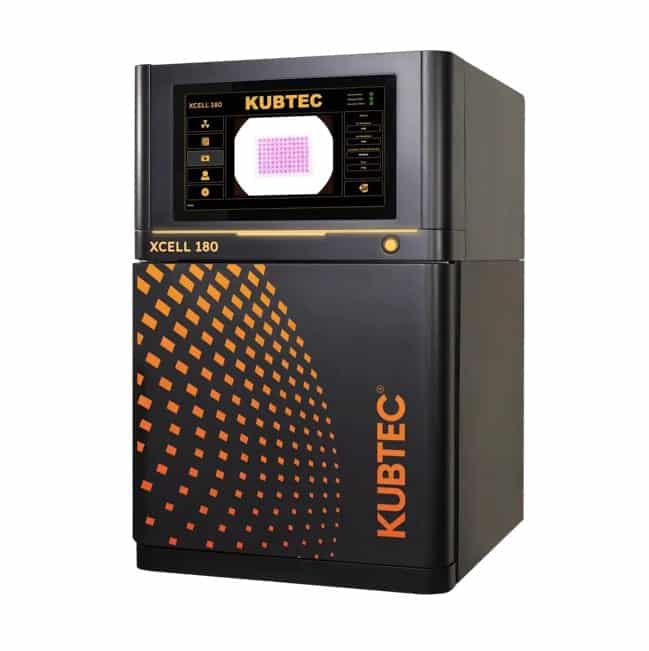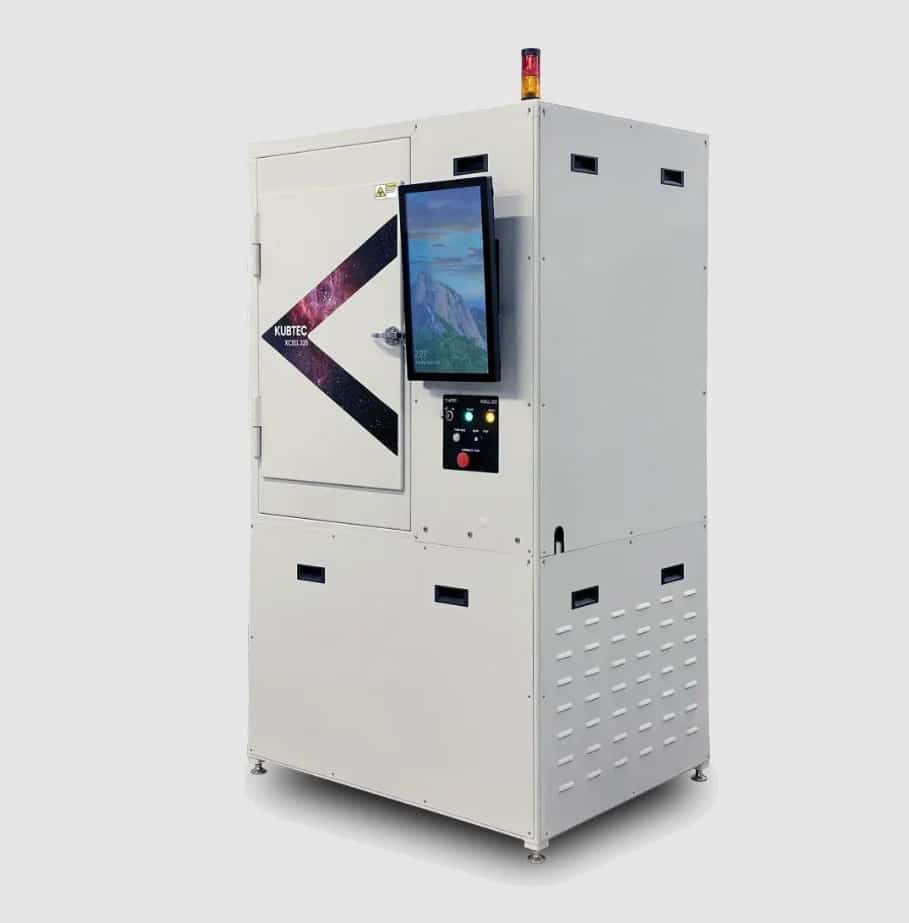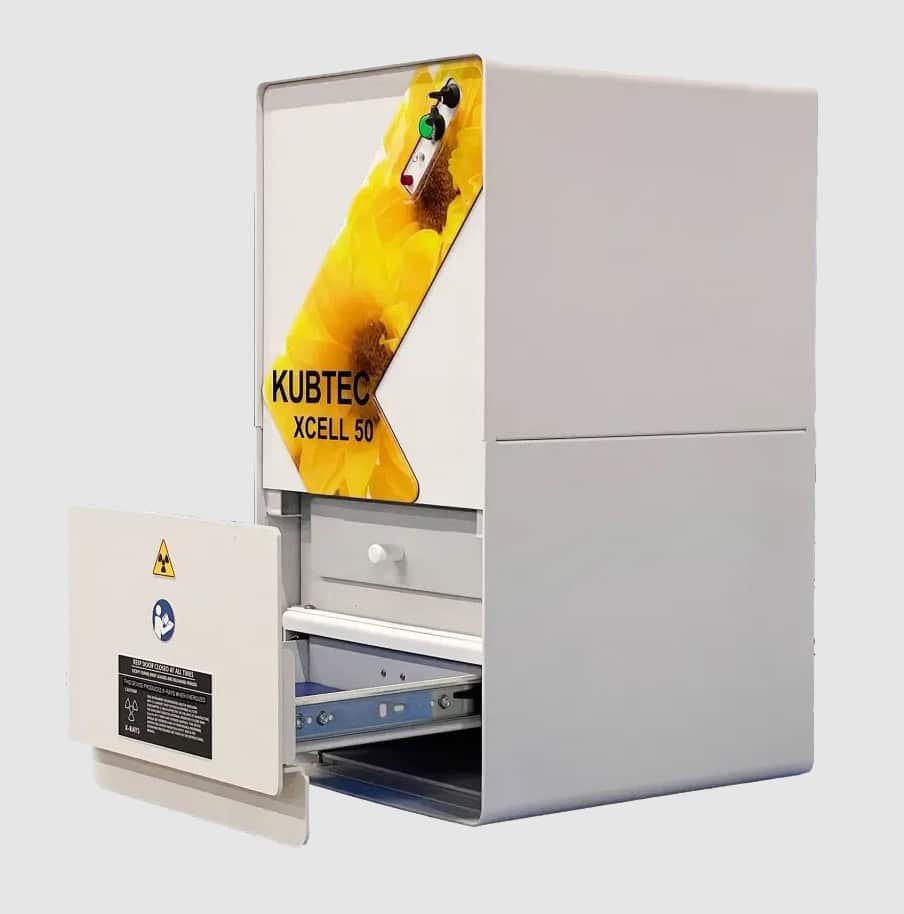Discover the comprehensive steps to safely transition from cesium irradiators to cutting-edge x-ray technology. Dive deep into the benefits, key considerations, and the detailed process.
Introduction
Radiation technology is evolving, and the move from cesium irradiators to X-ray irradiators isn’t merely a passing phase — it’s imperative. This guide illuminates the significance of this evolution, highlighting the numerous advantages while also addressing the inherent challenges of cesium. We also discuss how your facility may have much of the irradiator replacement costs covered by a program called the Cesium Irradiator Replacement Project.
A Glimpse into Cesium Irradiators
Historically, cesium irradiators have been pivotal in diverse arenas, especially within the medical and research domains. But their extensive application is not without its drawbacks and substantial safety issues. The radioactive character of cesium, particularly cesium-137, brings about concerns from environmental risks to potential malevolent abuse.
Cesium Irradiators in the Healthcare Landscape
Cesium irradiators have carved a niche in healthcare, especially in cancer therapy, medical imaging, and medical equipment sterilization. Their role has been indispensable in battling severe diseases and ensuring the efficacy and safety of medical interventions.
- Cancer Therapy: In radiotherapy, a vital cancer treatment method, cesium irradiators are pivotal. They deliver accurate radiation doses to cancerous cells, curbing or decelerating their proliferation. The potency of cesium in this realm is attributed to its ability to emit high-energy gamma rays, proficient in penetrating tissues and zeroing in on cancer cells.
- Medical Imaging: Cesium irradiators also find utility in medical imaging. Techniques like single-photon emission computed tomography (SPECT) and gamma cameras leverage them, enhancing the depiction of internal anatomical structures and assisting in diagnosing diverse ailments.
- Sterilization: Sterilizing medical tools is another crucial application of cesium irradiators. They obliterate pathogens from surgical tools, ensuring a contamination-free surface for medical interventions. This irradiation method is supremely effective in exterminating microorganisms, making it a trusted strategy for upholding the hygiene and safety of medical establishments.
Challenges and Safety Impediments
Despite their benefits, cesium irradiators come with inherent challenges, emphasizing the urgency to pivot to alternatives like X-ray irradiators. The radioactive aspect of cesium-137 demands rigorous safety protocols to avert unintended exposure and to safeguard the material from potential illicit use or theft. Furthermore, disposing of cesium-137 is daunting due to its prolonged half-life and the resultant environmental implications.
The Rise of X-ray Irradiators
Recognizing the constraints and safety issues tied to cesium irradiators, the transition to X-ray irradiators is a pivotal advancement. X-ray irradiators are more secure and adaptable. They sidestep the use of radioactive substances, eradicating the perils of radioactive contamination and misuse. Additionally, they offer a diverse energy spectrum, granting meticulous control over radiation doses, vital for therapeutic and diagnostic endeavors in healthcare.
Advantages of Shifting to X-ray Irradiators
- Augmented Safety: The primary allure of X-ray irradiators is the heightened safety they bring to the table. The non-reliance on radioactive elements slashes the risks of unintended exposure and streamlines the regulatory adherence for irradiation facility operations.
- Superior Precision: X-ray irradiators promise enhanced accuracy in radiation dose regulation, a cornerstone in medical settings where precise dosimetry is essential for treating effectively and safeguarding adjacent healthy tissues.
- Disposal Simplicity: The non-radioactive nature of X-ray irradiators simplifies disposal, minimizing environmental repercussions and lightening the load on medical establishments in terms of waste handling.
- Regulatory Relief: X-ray technology reduces the regulatory onus on institutions, making operations and compliance more straightforward.
- Flexibility: X-ray irradiators are adaptable, addressing a wider array of applications with unwavering efficiency.
Regulatory Compliance and Considerations
Transitioning technologies isn’t just about the switch: It’s also about ensuring compliance. Regulatory bodies, including the U.S. Nuclear Regulatory Commission, have set guidelines for the safe use, disposal, and transition from cesium to X-ray irradiators. It’s imperative for institutions to know these regulations to ensure a seamless and compliant transition.
Selecting the Right X-ray Technology
Choosing the right X-ray technology is important. Factors to consider include:
- Energy Spectra: Different applications might require different energy levels.
- Dose Rates: Depending on the purpose, the dose rate can be a determining factor.
- Operational Requirements: Consider the ease of use, maintenance, and longevity of the equipment.
Step-by-step Process for Replacement
- Assessment: Begin with a thorough evaluation of the current cesium irradiation system.
- Planning: Develop a comprehensive plan for the transition, considering all operational and regulatory aspects.
- Selection: Choose an X-ray irradiator that aligns with specific needs.
- Installation: Decommission the cesium irradiator and install the X-ray system, ensuring all regulatory standards are met.
- Training: Equip the team with the necessary skills to operate the new system efficiently.
Case Studies and Success Stories
Several institutions have successfully transitioned to X-ray technology. For instance, the Mount Sinai Health System’s shift underscores the superior capabilities of X-ray irradiators over cesium-137 devices. The facility’s journey, marked by challenges, offers invaluable insights for others considering a similar move.
Conclusion
The shift from cesium irradiators to X-ray technology is more than just a technological transition — it’s a step toward a safer, more efficient future. With the information provided in this guide, institutions can navigate this change with confidence, ensuring safety, compliance, and optimal performance.
FAQs (Frequently Asked Questions):
- What are the advantages of replacing cesium irradiators with X-ray irradiators?
The primary advantages include enhanced safety, reduced regulatory burdens, and versatility in applications. - Are X-ray irradiators more expensive than cesium irradiators?
While the initial investment might be higher, the long-term operational and regulatory costs are often lower with X-ray irradiators. - What are the regulatory requirements for replacing cesium irradiators?
Regulations vary by region, but they generally encompass safe disposal of cesium irradiators and compliance with installation and operation of X-ray systems. - How long does the replacement process typically take?
The timeline can vary based on several factors, including the chosen technology, regulatory processes, and institutional readiness. However, with proper planning, the transition can be smooth and efficient.
The Cesium Irradiator Replacement Project: A Comprehensive Overview
Introduction
The Cesium Irradiator Replacement Project (CIRP) is a monumental initiative that showcases the Department of Energy/National Nuclear Security Administration’s (DOE/NNSA) dedication to radiological security. Launched in 2014 by the Office of Radiological Security (ORS), the project is a response to the global push for higher safety standards in radiological technology. It emphasizes the importance of transitioning from cesium-137 and cobalt-60 based irradiators to safer, non-radioisotopic alternatives, such as X-ray devices. This article delves into the project’s objectives, incentives, benefits, and the reasons institutions should consider participating.
Reason for the CIRP’s Inception
The primary motivation behind the CIRP’s establishment is the significant risks associated with cesium chloride irradiators. These devices, which utilize a highly radioactive isotope, pose threats not only to the personnel operating them but also to the environment. The potential for radiological terrorism further magnifies these concerns, necessitating a project to phase out the use of such irradiators.
Objectives of the Cesium Irradiator Replacement Project
The CIRP, spearheaded by the ORS, collaborates with domestic users of cesium-137 and cobalt-60 irradiators. Its main goal aligns with the broader U.S. objective to phase out blood irradiation devices reliant on cesium chloride by December 31, 2027. To ensure a smooth transition, the project offers financial and logistical support to eligible institutions, aiding in the safe decommissioning of cesium irradiators and the procurement of modern non-radioisotopic devices.
Incentives for Participation
Facilities that align with the project’s criteria can avail of several substantial incentives:
- Removal and Disposal: The CIRP takes on the task of removing and disposing of the cesium-137 irradiator, leading to savings of around $100,000–$200,000 per device.
- Financial Support: Institutions can receive partial payment toward the new non-radioisotopic device, covering up to half of its cost. This support is provided after the cesium device’s removal and the new device’s installation.
- Training and Support: While facilities bear the responsibility for training and other associated costs, the project ensures they receive the necessary guidance throughout the transition.
Benefits of Transitioning
Switching to non-radioisotopic irradiators offers numerous advantages:
- Enhanced Safety: Institutions can mitigate the risks tied to cesium-137 devices, ensuring a safer environment for both personnel and the surrounding community.
- Operational Efficiency: Modern irradiators, such as X-ray and cobalt-60 devices, are known for their consistent performance, ease of maintenance, and reduced operational costs.
- Regulatory Compliance: Aligning with the CIRP ensures institutions meet evolving regulatory standards, potentially avoiding legal and financial repercussions.
- Economic and Environmental Benefits: Despite initial costs, the long-term economic benefits are promising. Additionally, by reducing the risk of radioactive contamination, institutions contribute to global environmental sustainability efforts.

Partnering with ARES: Your Pathway to Advanced X-ray Irradiation
As the landscape of radiation technology evolves, having a trusted partner by your side is paramount. ARES stands as your dedicated ally in this transition, specializing in replacing cesium irradiators with state-of-the-art X-ray irradiators. Our collaboration with Kubtec, a frontrunner in manufacturing premier irradiators, ensures that you receive nothing but the best. Our seasoned team is committed to guiding you in selecting the perfect X-ray irradiators tailored to your facility’s needs. Moreover, we’re here to assist you in leveraging the Cesium Replacement Project, potentially covering a significant portion of the replacement costs, if your facility qualifies. The future of radiation technology is here, and with ARES, you’re in capable hands. Reach out to us today and embark on a safer, more efficient journey in irradiation. Reach out to us for answers to your questions, and we’ll guide you step-by-step through the process.
Sources:
Source 1 Source 2 Source 5 Source 7 Source 8 Source 10







